Hi Readers: There were 65 accidents and two incidents for November 2007 as reported by NTSB (No accidents were reported for 11-17, 11-19, 11-24, 11-26, 11-29, and 11-30). The 65 accidents and the two incidents occurred in the Continental U.S., and 3 accidents occurred in foreign countries. There were 26 fatal accidents accounting for 52 fatalities (the 3 foreign accidents accounted for 9 fatalities). Alaska squeezed by this time with one Cessna non-fatal accident, with 2 serious injuries - an instruction flight, striking trees on an approach during dark night conditions. One incident involved a Delta Air Lines B-737 sustaining minor damage when the tire tread on the right outboard wheel separated and struck the airplane during takeoff from Phoenix Sky Harbor airport. The other, a UPS Douglas DC-8, experienced smoke in the cockpit from the lavatory area.
There was one mid-air collision - a Cessna 182A and an American Champion7GCBC collided at 1,500 ft msl over commencement Bay, Tacoma, Wa., the C-182A severing the Champions vertical stabilizer from above, the Champion then losing directional control and crash landing in the Bay. The Cessna landed successfuly. A taxiway collision occurred when a Cessna 208B collided with a Beech 18S at Opa LOcka, Fl. Both, cargo flights were taxiing to a refueling farm, neither pilot seeing the other airplane.
There were 5 non-injury and one fatal Helicopter accidents - a Bell 206A hard landing on a post-annual flight check, a Bell 222 when a wind gust forced the main rotor blade into the left vertical stabilizer fin and tail boom during engine start, a Hiller UH-12E involving inflight separation of a control rotor during an aerial application flight, a Robinson 22B touchdown in a left yaw during an instruction flight, and a Roloway Exec 162F impacted terrain in an emergency following a high frequency vibration in the main rotor blades. All incurred substantial damage. The fatal accident occurred when a Hughes 269C impacted the terrain, killing the pilot.
Once again the fatal accidents fuel the safety bin, indicating what we'll have to work on to prevent aircraft accidents. Taking the foreign accidents first, a Brazilian Learjet 35A crashed in a residential area of Sao Paula after takeoff, in daylight, incurring fatal injuries to the crew and 6 individuals on the ground, as well as 2 injuries on the ground. A French registered Piper PA-32R impacted terrain in daylight, under unknown circumstances, killing the pilot. A registered Mexican Cessna 208B experienced a forced landing following a loss of power on climbout. The Commercial pilot and two passengers were seriously injured, while 12 others sustained minor injuries.
There were 9 accidents involving the Cessna aircraft. An airline transport pilot departed Redding, Ca. on a day business x-c flight in a Cessna 340, 55 minutes later seen climbing out of a fog layer, heading into rapidly rising terrain at full power, clipping the tops of trees and impacting terrain. The pilot and two passengers recived fatal injuries. A Civil Air Patrol Cessna T182T was destroyed when impacting mountainous terrain at 7,200 ft msl below Mt. Potosi (8,514 ft msl) 24 miles SW of Las Vegas on a x-c flight to Rosamond, Ca. Both air transport pilots were fatally injured. VFR dark night conditions prevailed. A Cessna T210, on a night x-c flight, struck power lines on approach to R/W 19R to Jones airport near Tulsa, Ok. The weather was VFR, and an electrical problem was indicated. The pilot received serious injury, and the two passengers were fatal.
On a local instructional flight in VFR conditions, an instructor and student flying a Cessna 172N impacted terrain inverted, 90 degrees nose-down - witnesses indicated a possible engine problem. Injuries were fatal to both. A witness reported seeing a Cessna 177 impact the ground in a nose-down attitude near Auburn, CA. in daylight VFR conditions. The aircraft had been rented from an aviation club. The pilot and the passenger were fatally injured. Another impact with terrain was reported - a Cessna A150K loss of control during initial takeoff from R/W 35 at Mesquite airport in Texas - a local day flight. The pilot, an IP, and a passenger received fatal injuries. A witness saw the airplane enter a spin following folowing a nose-low steep turn. Another Cessna 172, piloted by a private certificated pilot, impacted terrain near Gladinar, Michigan, in day VFR conditions. The airplane was seen maneuvering at low altitude and descending nose-down into trees. And yet another Cessna 182Q was destroyed when it impacted trees and terrain while maneuvering on a pipeline patrol flight, in daylight conditions, near Farmerville, Louisiana - the pilot was killed. A 2-serious injury accident was reported near Palmer, Alaska, when an Instructor and student in a Cessna 150 struck trees on the approach to R/W 34 during dark night conditions. The 9 fatal Cessna accidents, primarily loss of control and/or critical judgment factors appear as a result of multiple causes. We'll await the final determinations made by NTSB for these accidents.
There were 3 Amateur-built fatal aircraft accidents during the period, one a Vans RV-10 aircraft, one a Herink Challenger II, and one a Blondin 601 HDS. All three impacted terrain in day VFR weather conditions. Another experimental home-built airplane, a Kewlly FID, crashed in a flat spin near Reno, Nevada, in daylight VFR conditions. The Commercial pilot sustained fatal injuries. And another experimental light sport airplane, operating under a special airworthiness certificate, a Zodiac 601 XC, collided with terrain near La Rille, Missouri. The airplane was seen rolling into a vertical descent following a left turn.
There was one Amateur-built helium balloon, a Padelt PG 37-1, that collided with power lines in Hampton, Iowa. The Commercial pilot and one passenger were fatally injured. The surviving passenger reported that a gust of wind pushed the balloon into a high tension power line. This, of course, is the principal hazard of the sport of balloon flying - you go where the wind blows and try to avoid the gusts.
The amateur-built aircraft accidents indicated low-time pilots, and some erratic flying at low altitude in VFR weather conditions. The amateur-experimental type aircraft requires a specific and special airworthiness certificate under FAR 21.191 (g), which includes air racing, kit-built aircraft, and light sport aircraft. The special airworthiness certificate, a study in itself, applies to the less complicated flying, but yet not without hazards. The experimental, amateur-built, and sport flying seems to be on the increase, and should be viewed in the same safety light as all other flying.
The subject of Airworthiness, very important, is simply aircraft being fit for flight, and will be discussed in detail at a later date.
Thanks for listening. R.S.
Saturday, December 15, 2007
November 2007 Aircraft accidents/Incidents
Subscribe to:
Post Comments (Atom)

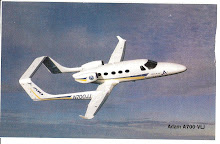

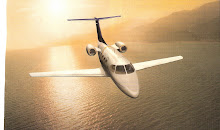


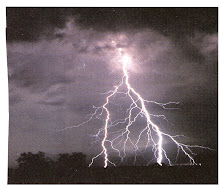

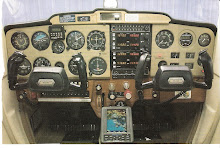
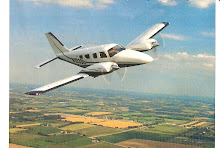
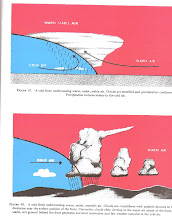
No comments:
Post a Comment